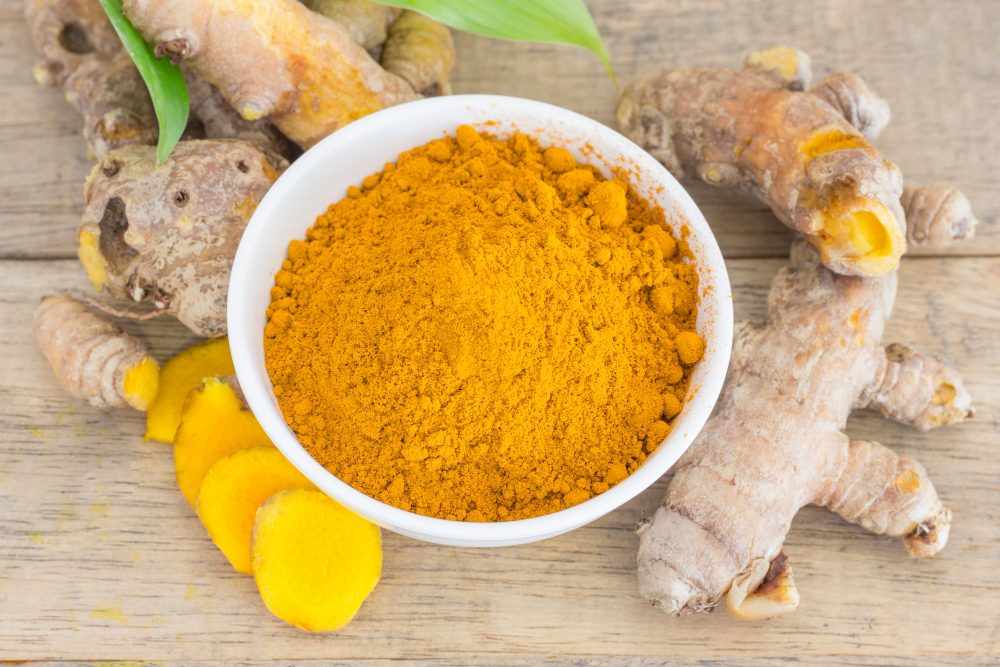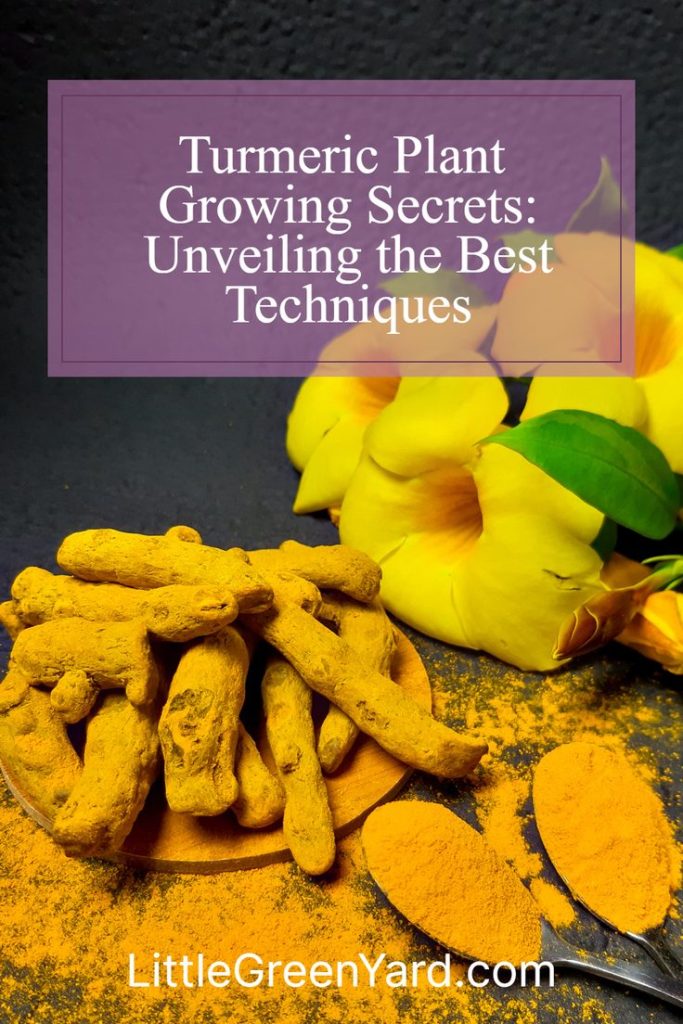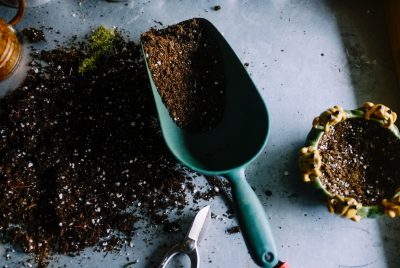Turmeric Plant Growing Secrets: Unveiling the Best Techniques
Imagine stepping into your garden and seeing your lush, vibrant turmeric plants. The earthy aroma fills the air, hinting at the rich flavors and health benefits that await. But how do you achieve this garden paradise? How do you uncover the secrets to growing a thriving turmeric plant that yields a bountiful harvest? In this article, we will unveil the best techniques for cultivating and caring for your own turmeric plants, ensuring that you unlock their full potential. From choosing the perfect location to protecting them, we will guide you through every step of the process so that you can witness the incredible results for yourself. So, let’s dive in and discover the hidden secrets of growing a successful turmeric plant!
Choosing the Perfect Location
Choosing the perfect location for your turmeric plants is essential to their overall health and productivity and sets the foundation for a successful growing season. As you move forward in the process turmeric plant growing, it’s important to consider a few key factors that will enhance their growth and ensure a successful harvest. In this section, we will explore the importance of ample sunlight, proper moisture levels, nutrient-rich soil, and adequate space to give your turmeric plants the best chance at producing a bountiful harvest.
Amount of Light
First and foremost, your turmeric plants thrive in warm climates that receive plenty of sunlight. Aim for a location that offers at least six to eight hours of direct sunlight each day. This allows the plants to soak up the necessary energy they need to grow, develop robust roots, and produce those vibrant golden rhizomes. Be mindful of any nearby structures or trees that may cast shadows and impede the full potential of your turmeric plants.
Moisture Levels
Furthermore, consider the moisture levels in the chosen location. Turmeric plants require consistent moisture to flourish, but they can suffer if the soil becomes waterlogged or deprived of water. Look for an area that drains well, to ensure that soil will not become waterlogged and potentially causing root rot. At the same time, avoid excessively dry spots that would force you to constantly water the plants. Striking the right balance of moisture is key to helping your turmeric plants thrive.
Soil Quality
In addition to sunlight and moisture, it’s important to pay attention to the soil quality in the selected location. Turmeric plants prefer well-drained, loamy soil that is rich in organic matter. Before planting, take the time to amend the soil by adding compost or manure to improve its fertility and drainage. This will provide the essential nutrients and optimal growing conditions for your turmeric plants. If you are unsure about your soil quality, be sure to pick out a suitable soil testing kit from your local garden center, so that you know the exact quality and pH of your soil and how to amend it.
Space for Turmeric Plant
Lastly, consider the space available for your turmeric plants to spread out. These plants have long, lush foliage that requires room to grow and reach its full potential. Make sure to allow enough space between each plant, typically about 12 to 18 inches, to prevent overcrowding and promote airflow. This will reduce the risk of disease and give each plant the opportunity to reach its maximum size.
Preparing the Soil
To ensure your turmeric plants thrive and yield a successful harvest, it is essential to prepare the soil properly. A well-prepared soil provides the necessary nutrients, proper drainage and conditions for your plants to flourish. With the right location secured, let’s now delve into the crucial task of preparing the soil.
Step 1: Cleaning up
Start by clearing any debris, rocks, or weeds from the chosen area. This will create a clean and fresh canvas for your turmeric plants. Any obstacles, such as weeds, can compete for vital nutrients and hinder the growth of your crop. So, take the time to remove them thoroughly before moving forward.
Step 2: Setup Proper Drainage
It is advisable to loosen the soil to enhance drainage and improve root penetration. Turmeric plants prefer well-draining soil, as excessive moisture can lead to root rot and other plant diseases. Use a garden fork or tiller to break up any compacted soil and create a loose, friable texture. This will also facilitate the absorption of nutrients and water by the plants’ roots.
Step 3: Nutritious Soil
It is time to address the nutrient needs of your turmeric plants. As mentioned earlier, it is worth to conduct a soil test to help you determine the existing nutrient levels and identify any deficiencies. Based on the results, you can supplement the soil with appropriate fertilizers or amendments to ensure a balanced nutrient profile. Follow the recommended application rates and methods specific to turmeric cultivation. You can choose either organic or synthetic fertilizers, based on your gardening philosophy. Whichever you choose, spread a layer of your fertilizers over the surface of the soil and incorporate it gently using a garden fork or tiller.
Planting and Care Instructions for Turmeric Plant Growing
The right planting and care instructions are essential for nurturing your turmeric plants and ensuring their healthy growth and abundant harvest. When it comes to turmeric plant growing, it is best to start with high-quality seeds or rhizomes sourced from reputable suppliers or nurseries that specialize in turmeric. This will ensure that you have a strong foundation for your plants right from the beginning. Here is a brief guideline on how to plant and care for your turmeric plants:
- Prepare the soil: Turmeric plants thrive in well-drained soil that is rich in organic matter. It is also important to choose a location that receives at least six to eight hours of direct sunlight daily.
- Planting: It is recommended to plant the rhizomes or seeds about two inches deep into the soil. If you are using rhizomes, make sure to plant them with the buds facing upwards. Space the rhizomes or seeds at least 12 to 18 inches apart to allow for proper growth and development.
- Watering: Turmeric plants prefer a consistently moist environment, so make sure to water them whenever the top inch of soil feels dry to the touch. Be careful not to overwater and saturate the soil, as this can lead to root rot and other issues.
- Fertilization: Providing proper nutrients to your turmeric plants is essential for their overall health and growth. As the plants develop, they will require regular feeding to support their growth. Using a balanced, organic fertilizer that is rich in nitrogen, phosphorus, and potassium can help provide the necessary nutrients for successful turmeric plant growing. You can apply the fertilizer according to the manufacturer’s instructions, ensuring you distribute it evenly around the plants.
Protecting Your Turmeric Plant
Just like any other plant, turmeric plants are susceptible to various threats that can hinder their growth and development. It is important to be proactive in protecting your plants against these common issues to ensure their long-term vitality. By implementing effective protection techniques, you can provide a nurturing environment for your turmeric plants to thrive.
Pests
One of the key threats to turmeric plants is pests. These tiny invaders can wreak havoc on your plants, causing damage to the leaves, stems, and even the roots. To prevent pest infestations, regularly inspect your turmeric plants for any signs of trouble. Look out for chewed leaves, discoloration, or the presence of pests themselves. Should you discover any pests, consider using organic pest control methods such as neem oil or insecticidal soaps to keep them at bay.
Diseases
Another common issue that turmeric plants face is diseases. Diseases can stunt growth and lead to the deterioration of the plant over time. To minimize the risk of diseases, it is crucial to maintain proper sanitation practices. Remove any dead or decaying plant material promptly and keep the growing area clean and well-ventilated. Additionally, consider using disease-resistant varieties when starting your turmeric garden.
Extreme weather conditions
Extreme weather conditions can also pose a challenge for turmeric plants. Turmeric thrives in warm and humid climates, so it is important to provide protection during periods of cold or frost. Consider covering your turmeric plants with frost blankets or bringing them indoors if the temperature drops below their tolerance level. Likewise, during scorching heat, provide shade or use mulch to keep the soil moist and cool.
Root Rot Issues
One of the main concerns for turmeric growers is root rot, which can significantly impact the plant’s ability to absorb nutrients and water, leading to stunted growth and even death if left unchecked. Root rot is caused by various types of fungi and bacteria that thrive in wet and poorly drained soil. Excessive moisture around the roots creates the perfect breeding ground for these harmful organisms, gradually weakening the root system and making it more susceptible to diseases. It’s important to note that root rot is not only a problem in outdoor gardens but can also occur in potted plants, making it imperative to provide adequate drainage for your turmeric plants regardless of their growing environment.
To prevent root rot in your turmeric plants, it’s crucial to start with well-draining soil. A mixture of organic compost, sand, and perlite can help create a loose and airy growing medium that allows excess water to drain away from the roots. Avoid using heavy clay-based soils, as they tend to retain water and increase the risk of root rot. Practice proper watering habits to preventing root rot. While turmeric plants require consistent moisture, it’s important to find the right balance and not overwater them. Allow the top inch of soil to dry out slightly between waterings to ensure the roots have access to oxygen. Additionally, it’s best to water the plants in the morning to give them ample time to dry during the day, reducing the likelihood of fungal growth.
Regularly inspecting your turmeric plants for signs of root rot is essential for catching any issues early on. Look for yellowing or wilting leaves, stunted growth, and an unpleasant odor emanating from the soil. If you notice any of these symptoms, it’s important to act swiftly. Carefully remove the affected plant and discard it to prevent the spread of disease. Consider sterilizing your gardening tools to avoid contaminating healthy plants.
Growing Turmeric Plant in Containers
Container gardening offers a practical solution for individuals who have limited garden space or want the flexibility to move their plants around. Turmeric can indeed be grown successfully in containers, allowing you to enjoy its health benefits even if you lack a traditional garden bed. Here are some tips:
- Opt for a pot that is at least 12 inches in diameter and provides ample drainage. Turmeric plants require well-draining soil to prevent root rot, so make sure the container has adequate holes at the bottom to allow excess water to escape.
- Fill the container with a rich, organic potting mix that is slightly acidic. This will provide the necessary nutrients and pH levels for your turmeric plants to thrive. You can also add compost or organic matter to further enrich the soil and promote healthy growth.
- Place the container in a sunny location, preferably receiving at least six hours of direct sunlight per day. Turmeric plants love warmth and sunlight, so choose a spot where they can soak up the rays. If you live in a colder climate and plan to bring your turmeric plants indoors during winter, place them near a sunny window or under grow lights to ensure they continue to receive sufficient light.
- Turmeric plants prefer to be kept consistently moist, but not waterlogged. Check the moisture level of the soil regularly and water as needed, ensuring the soil doesn’t dry out completely between watering.
Simple Cooking Recipe With Turmeric
Now that you have the knowledge and techniques to grow turmeric in containers, let’s move on to a simple cooking recipe that incorporates this vibrant spice. Adding turmeric to your dishes not only infuses them with a beautiful golden color but also adds a warm and earthy flavor. By incorporating turmeric into your cooking, you not only add a burst of flavor but also benefit from its potential health properties. Its active compound, curcumin, has been linked to numerous health benefits, including reducing inflammation and acting as a powerful antioxidant.
Turmeric Rice
Ingredients:
- 1 cup basmati rice
- 2 Tablespoons Olive Oil
- 1 Onion (white or red), finely chopped
- 2 Garlic Cloves, minced
- 1 Teaspoon grated Ginger
- 1 Teaspoon grounded Turmeric
- 2 cups Vegetable or Chicken Broth
Start by rinsing the basmati rice under cold water until the water runs clear. Then, in a saucepan, heat olive oil over medium heat. Add chopped onion, minced garlic cloves, and grated ginger to the pan, and sauté until the onion becomes translucent.
Next, add ground turmeric to the pan and stir well to combine the spices with the onions and garlic. This will release the aromatic compounds in the turmeric and enhance its flavor.
Then, add the rinsed basmati rice to the pan and stir it gently to coat the rice grains with the turmeric mixture. Cook the rice for a minute or two, allowing the flavors to meld together.
Lastly, pour in vegetable or chicken broth and bring the mixture to a boil. Once it starts boiling, cover the pan with a tight-fitting lid and reduce the heat to low. Let the rice simmer for about 15-20 minutes or until all the liquid has been absorbed and the rice is cooked through.
Once the rice is cooked, remove the pan from the heat and let it sit covered for an additional 5 minutes. This will allow the rice to steam and become fluffy. Fluff the rice with a fork and serve it as a side dish to complement your main course. The vibrant yellow color and aromatic flavors of the turmeric will surely impress your guests and bring a delightful twist to your meal.
Parting Words
In conclusion, mastering the art of growing a flourishing turmeric plant is a journey worth embarking on. Throughout this article, we’ve explored the secrets to selecting the perfect location, preparing the soil, choosing the right turmeric variety, and providing the plant with the care it deserves. We’ve learned the importance of effective watering and feeding, as well as the steps to protect our turmeric plant from potential threats. We’ve even discovered how to grow turmeric in containers and enjoyed a simple and delicious cooking recipe utilizing this vibrant spice.
Remember, growing a turmeric plant is not just about nurturing a crop; it’s a transformative experience that connects us to nature’s abundant offerings. As you watch your turmeric plant flourish, embrace the joy of cultivating life and the beauty it adds to your surroundings. Let this journey instill in you the curiosity and excitement to explore other natural wonders waiting to be discovered.

FAQs
Q: What is the ideal amount of sunlight for turmeric plants, and why is it crucial for their growth? A: Turmeric plants thrive in warm climates with at least six to eight hours of direct sunlight each day. Adequate sunlight is essential for the plants to absorb the energy needed for growth, root development, and the production of vibrant golden rhizomes.
Q: How can I prevent root rot in my turmeric plants, and what are the signs of this issue? A: To prevent root rot, it’s crucial to start with well-draining soil and avoid overwatering. Signs of root rot include yellowing or wilting leaves, stunted growth, and an unpleasant odor from the soil. Regularly inspecting the plants and maintaining proper watering habits are essential for early detection and prevention.
Q: Can turmeric be grown in containers, and what are the key considerations for successful container gardening? A: Yes, turmeric can be grown in containers. For successful container gardening, choose a pot with adequate drainage, use well-draining, slightly acidic soil, place the container in a sunny location, and maintain consistent moisture without waterlogging. These practices ensure healthy growth even in limited spaces.
Q: What kind of soil is best for turmeric plants, and how can I improve the soil quality? A: Turmeric plants prefer well-drained, loamy soil rich in organic matter. Before planting, amend the soil by adding compost or manure to enhance fertility and drainage. Conducting a soil test helps determine nutrient levels, and based on the results, suitable fertilizers or amendments can be added to create optimal growing conditions.
Q: What are the common threats to turmeric plants, and how can I protect them from pests and diseases? A: Turmeric plants can be threatened by pests, diseases, and extreme weather conditions. Regularly inspect plants for signs of pests, use organic pest control methods like neem oil, maintain proper sanitation to minimize diseases, and provide protection during extreme weather by covering plants during cold periods and ensuring proper ventilation.
slot88 toto slot toto togel toto slot https://polreskedirikota.id/ slot gacor slot 4d situs slot terbaik toto slot bandar togel toto slot situs slot situs toto toto slot situs toto slot 4d togel toto slot rtp slot situs slot slot resmi rtp slot rtp slot hari ini situs slot situs gacor hari ini




